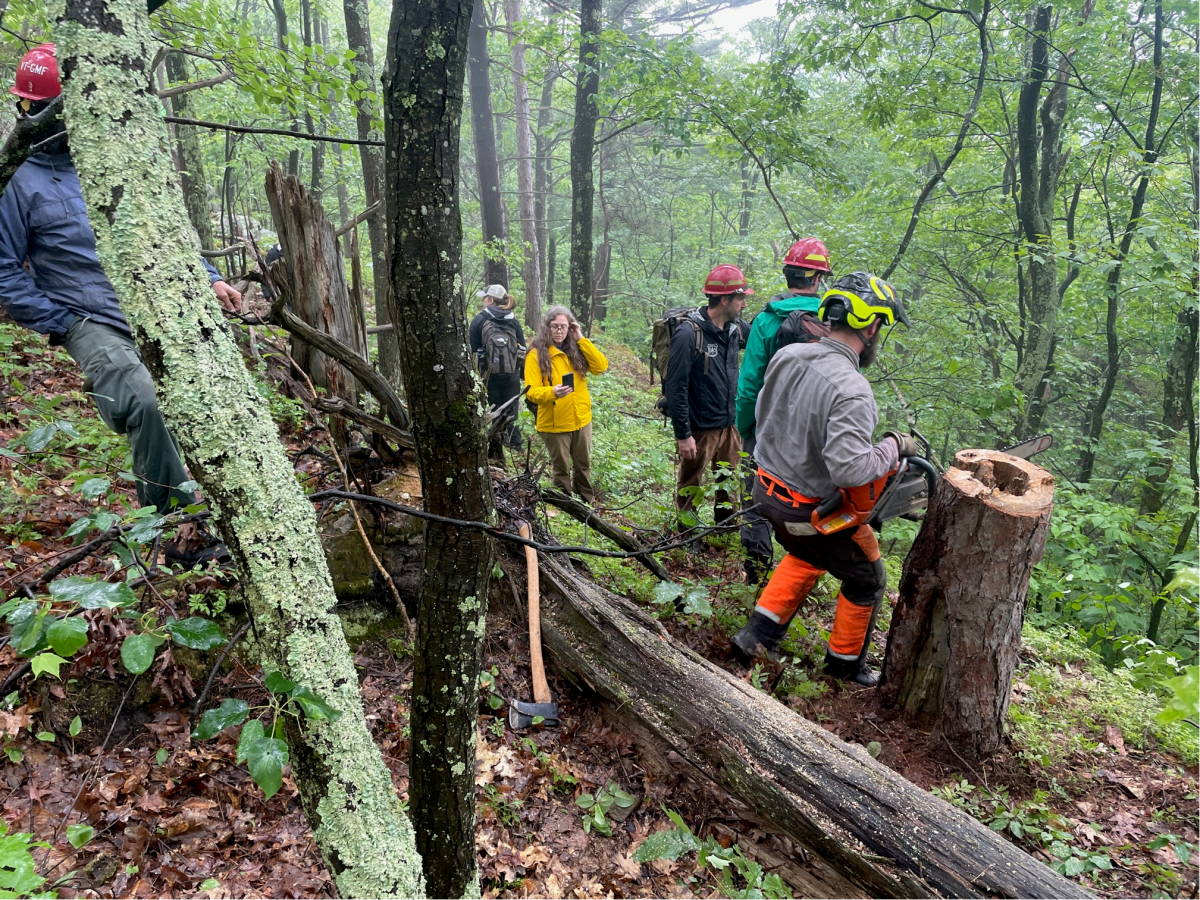You are here
Bullard Spotlight: Forest Fires in the Eastern U.S. with Mike Stambaugh

This summer, heavy smoke from forest fires in Canada has reminded many of us of the potential for fires, the history of fire management, and importance of fires to ecosystems processes– even in the eastern part of the country. For Michael Stambaugh, the narrative of changing fire regimes has been of interest for decades, where his research and documentation of fire history improves our understanding of human-fire associations, ecosystem processes, and future land management, including controlled burning.
Finishing up six months as a Charles Bullard Fellow in Forest Research at Harvard Forest, Stambaugh directs the Center for Tree-Ring Science and is an Associate Professor of Forest Ecology at the University of Missouri’s School of Natural Resources. By examining fire injuries demarked in the rings of old remnant dead and living trees, Stambaugh describes changes in fire across the eastern United States from about year 1500 to the present. This narrative is supplemented with an understanding of human history, past climate conditions, changing vegetation patterns, regular participation in controlled burns, and knowledge of fire behavior, effects, and use.
“The historical importance of fire in some eastern U.S. ecosystems is intensely debated and often dismissed due to the lack of fire activity during the last century or more,” notes Stambaugh, who has been involved in the collection and analysis of over 100 fire history records across the Great Plains and eastern United States. While fires in the east are often less severe than the western part of the country, most ecosystems in the eastern United States are indeed flammable and susceptible to the whims of climate change.
Stambaugh was drawn to Harvard Forest because of our researchers’ wide breadth of experience and knowledge of northeastern U.S. ecosystems. The unique nature of the New England region was also of interest: historical fire ecology is relatively understudied compared the rest of the country, and the early socio-ecological upheavals of European colonization and Tribal decimation still leave us with significant opportunity for learning.
For more information on the ecology of fire in eastern U.S. oak forests, Stambaugh recommends Fire in Eastern Oak Forests: A Primer

Photo: Stambaugh working with a group of fire managers and scientists from throughout the northeastern U.S. on the Green Mountain National Forest in Vermont (June, 2023). Here, samples are being cut from a dead red pine tree with multiple fire scars from the last 200-300 years to determine the exact years and seasons of historical fires.

